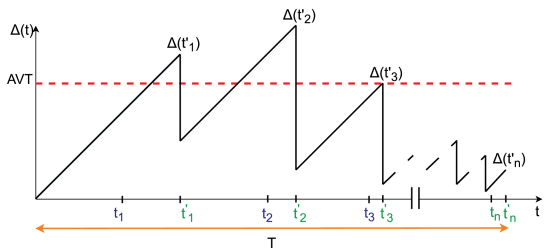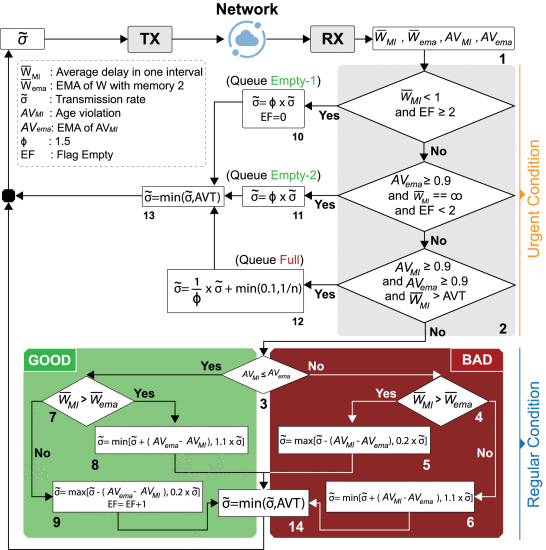A³L-FEC-FSFB: Age-Aware Application Layer Forward Error Correction with Fixed Sampling Rate and Fixed Block-length

The Age of Information (AoI) has emerged as a critical performance metric for applications requiring timely status updates, such as industrial control, smart grid monitoring, and IoT systems. However, traditional error correction and congestion control techniques often fail to account for the freshness of information, leading to outdated or redundant transmissions in lossy network environments. In this context, we propose A3L-FEC-FSFB, an Age-Aware Application Layer Forward Error Correction framework that integrates AoI awareness into the data sampling and transmission process using a Fixed Sampling Rate and Fixed Block-length (FSFB) architecture.

In the proposed scheme, the source samples data at a constant interval and encodes every group of k updates into a block of n packets using a systematic Maximum Distance Separable (MDS) code. These coded packets are then transmitted over a lossy channel without requiring feedback or retransmissions. By explicitly aligning the coding and scheduling mechanisms with application-specific freshness goals, A3L-FEC-FSFB ensures that updates are not only delivered reliably but also remain relevant upon arrival. The age-aware decoding rule at the receiver side discards stale blocks that would not contribute to freshness improvement, allowing the system to prioritize the most impactful updates.
We analyze the expected AoI under the proposed coding structure, derive theoretical expressions for its behavior, and evaluate the trade-offs between block length, sampling rate, and coding redundancy. Our extensive simulation results demonstrate that A3L-FEC-FSFB significantly outperforms conventional schemes that are agnostic to AoI. In particular, under medium to high packet loss rates, our approach maintains lower average AoI by leveraging FEC redundancy to recover timely updates, while avoiding the overhead of retransmissions.
Furthermore, the FSFB model provides a tractable and practical baseline for understanding age-aware coding strategies, serving as a stepping stone toward more adaptive designs. This work highlights the importance of incorporating freshness metrics into protocol design and opens the door to further exploration of age-aware coding in dynamic and delay-sensitive environments.

For more information, please click here!

